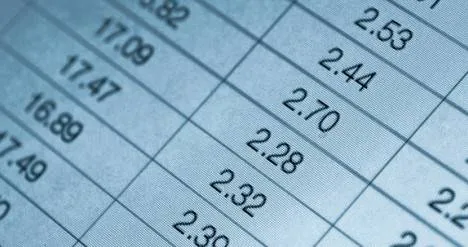Excel skill is one of those things that crops up in job descriptions regularly. I am pretty solid with the Microsoft suite. I took a class on Excel back in high school but, as a person who deals with words more often than numbers, I have never needed to use Excel for anything more than a basic spreadsheet. So my skills are certainly in need of some limbering up.
Tutorial
The first thing I’ve done is check out an Excel tutorial. I work at a college, so I have access to the
Lynda.com courses, managed by LinkedIn. Some public libraries also offer this and
YouTube has a wealth of Excel tutorials so it’s worth checking multiple options. The tutorial will give you an overview of the program, fill gaps you didn’t know you had, and give you a breadth of knowledge about what Excel can do. What it couldn’t do for me is make me excited to manage data while learning Excel in my free time. Until I found the perfect data for me to practice with.
Apply Skills to Book Data
I am a book lover who loves keeping track of my data. I have lists and shelf organization, I use Goodreads and Libib, and have made lists on my library website and on Amazon. Why not combine all this data and give myself a marketable skill?
The lack of real world practice slowed my Excel learning. I’m a hands-on learner, especially with computer programs. The realization that I can use my book data to apply the skills from the Excel tutorial was like a small epiphany. I am now pumped to get into my Excel document every day to update my reading stats and I have actual user questions to research, which help me better understand the issue.
There are book data spreadsheet templates around the internet.
Book Riot has some suggestions,
Brock from the YouTube channel “Let’s Read”, and I’m currently starting off with a slightly simpler spreadsheet created by
Sophie from “Portal in the Pages.”
I’m starting with a pre-made spreadsheet so that I don’t have to reinvent the wheel as I’m getting into Excel. Once you find a spreadsheet you like, go wild tailoring it to your needs and interests. Track your purchases, track your TBR, track your library holds list, track how just how long you keep books you borrow from friends. You can use the formulas to measure the diversity of the authors you purchase vs. the authors you read. Are you reading diversely but buying homogeneously? Why not add your new “want to read” books to your spreadsheet and then re-evaluate them at a later date to keep that digital wish list from growing too much? (
More on TBR decluttering from BR’s Emily Polson.)
I’ve modified my spreadsheet to track my reading of 2018 releases and added a column measuring how much money I’ve saved by getting books from the library. I’m also considering adding multiple pages tracking my other hobbies, measuring time spent on my personal writing projects.
Find a spreadsheet you like the look of and get going with your book data! If you’re feeling confident, build yourself a whole new book data spreadsheet and share it with others. And don’t forget to add Excel skills to your resume!











